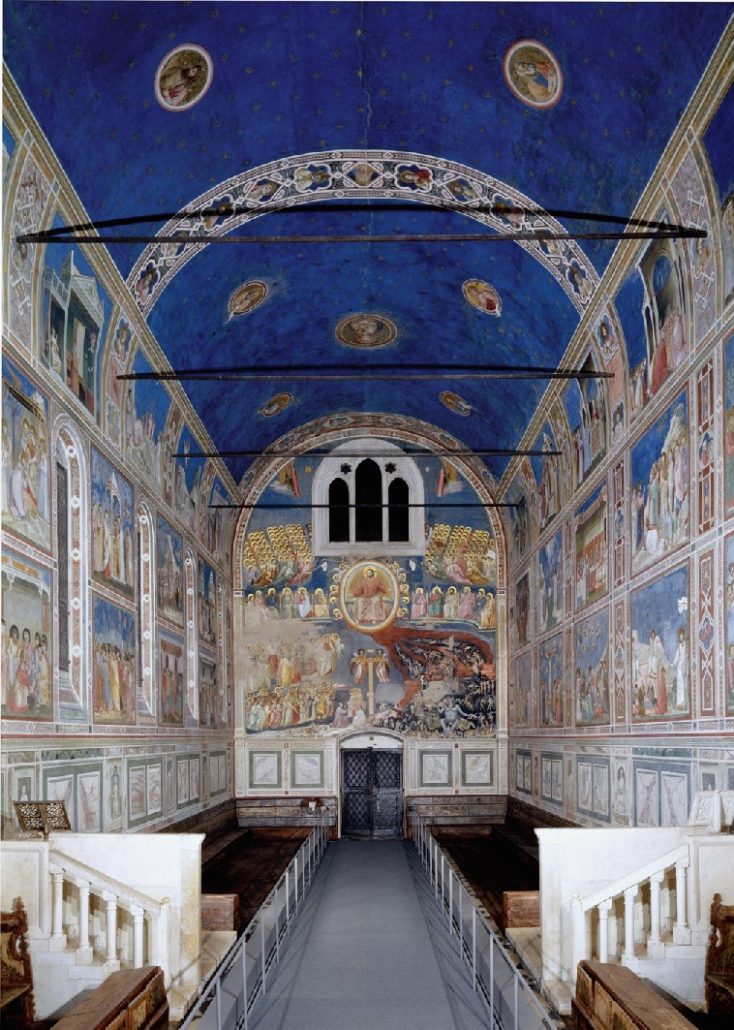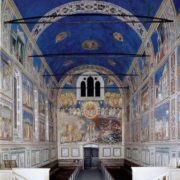Petition to Save Giotto’s Frescoes in Padua
The elaborate conservation and restoration project for the Scrovegni or Arena Chapel sketched out by the Comune of Padua, who are the owners, reveal the intention is not merely to maintain the frescoes but to ‘improve’ them.
It is also clear from the doc umentation distributed on 30 September 1995 by local Paduan officials in the presence of the Minister of Beni Culturali, Hon. Antonio Paolucci that the true object is indeed a drastic restoration of Giotto’s famous paintings since upwards of 5 milliards o f lire (3+ million dollars) are being made available. Such sums hardly indicate a simple dusting. All this without determining the actual need nor spelling out the philosophy or the goals of such an intervention, after only a generation.
Measures being initiated include a new entrance construction of questionable appearance. According to announced plans, with the objective of eliminating humidity and pollutants, a state-of-the-art futuristic system is to be created, which is at best out of context with the fourteenth century structure, and which is claustrophobic, experimental, possibly dangerous and surely an expensive experiment. Instead of this band-aide approach, the issues of pollution and humidity should be part of a larger progra m that includes the elimination of auto and bus traffic in the area near the monument, for example, as well as control of the kind of heating fuel used in the zone. And what about the water knee deep in the crypt?
We must applaud the emergency interventions to prevent loss of pictorial surface. However, it is evident that the officials are seeking to restore all of Giotto’s cycle, at a stage even before it is proved that such a drastic step is necessary or desirable.
ArtWatch is categorically opposed to restoration of Giotto’s frescoes for pure or mainly aesthetic considerations. We know that a perfectly acceptable approach for 1995 might not be so attractive a decade rom know, in 2005. It is best not to touch the frescoes except in an campaign of “soft” maintenance but not beautification.
The “science” of restoration, like all other sciences if indeed it is a science at all, transforms itself in a constant organic process. The Scrovegni Chapel is the last cycle pertaining to painting of the greatest and most illustrious category not to ha ve be subjected to a drastic interventions within the past generation. Think of the Brancacci, the Signorellis in Orvieto, the Last Supper in Milan, the Sistine Chapel.
Before action is taken second and third opinions must be sought, and careful and deliberate discussions should be undertaken on a international level.


